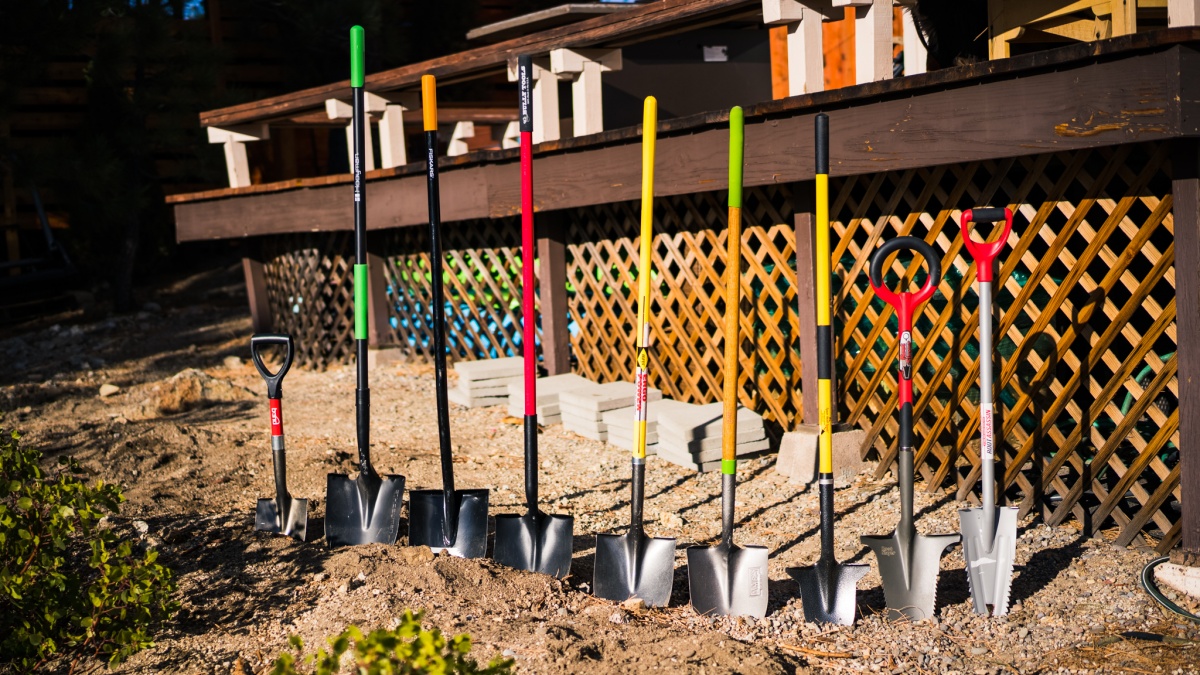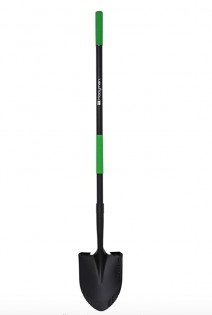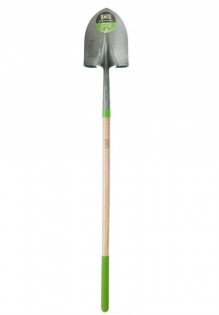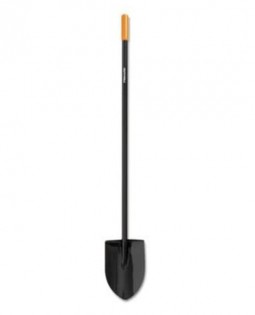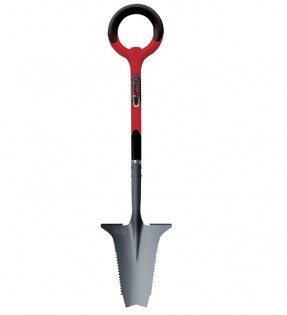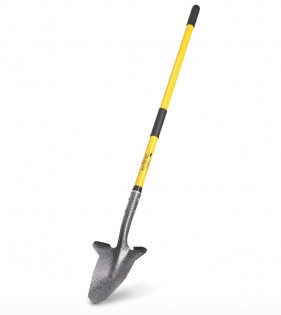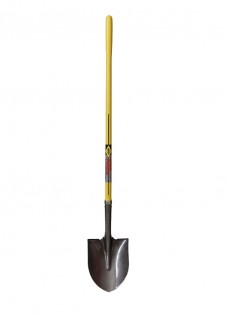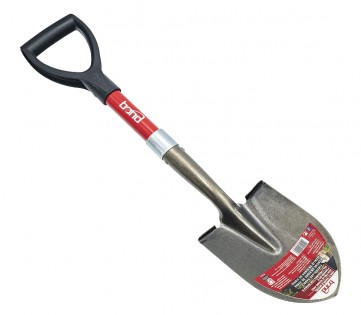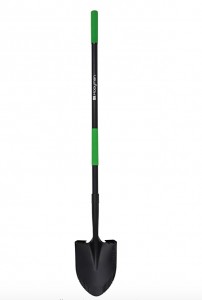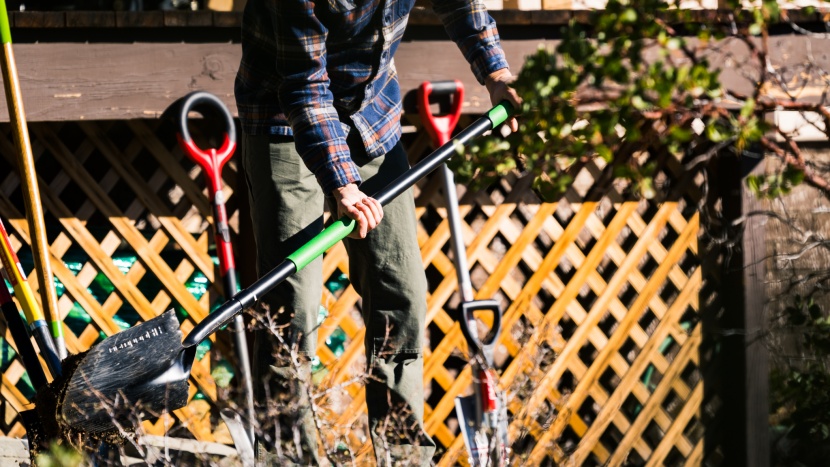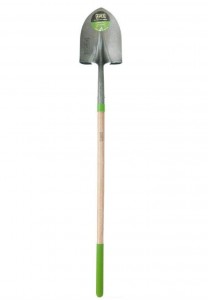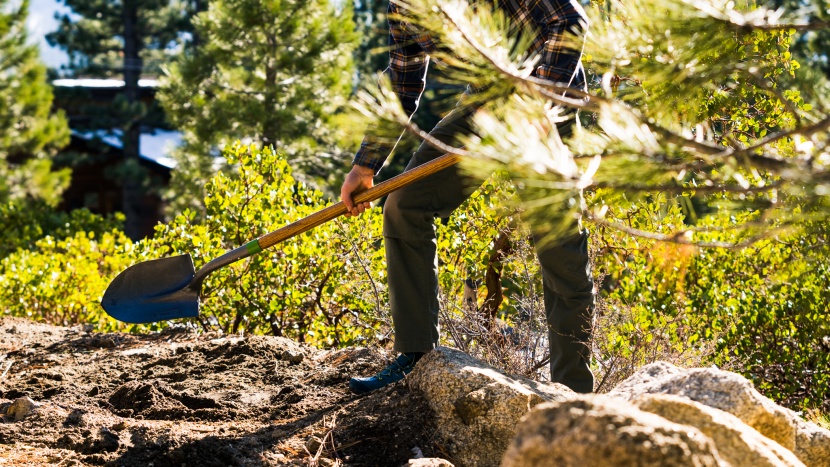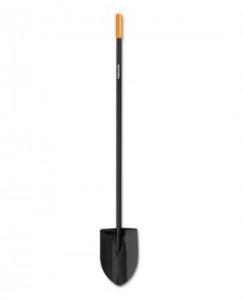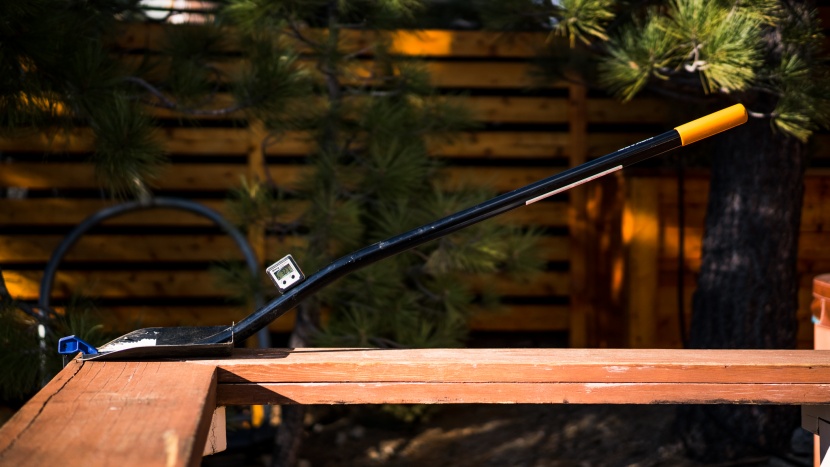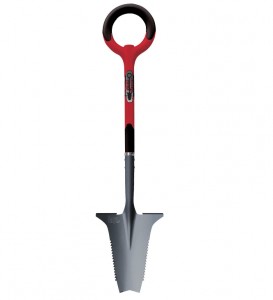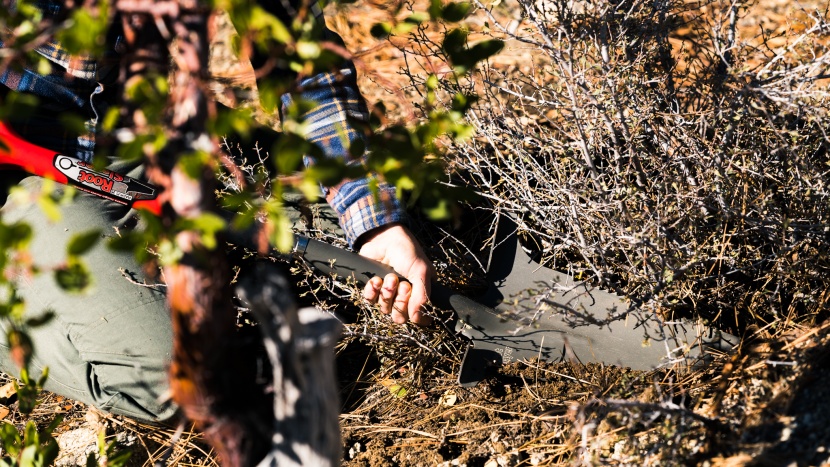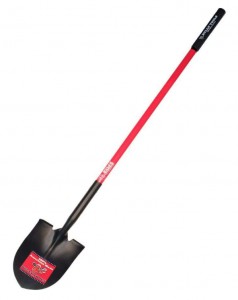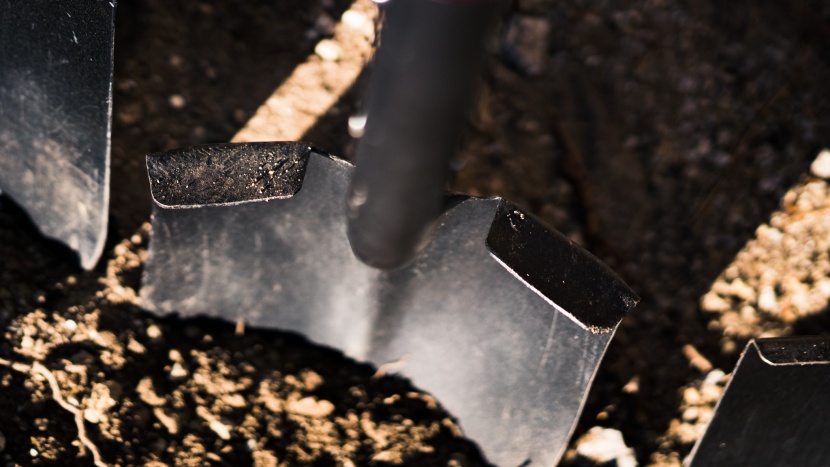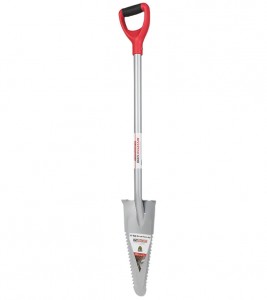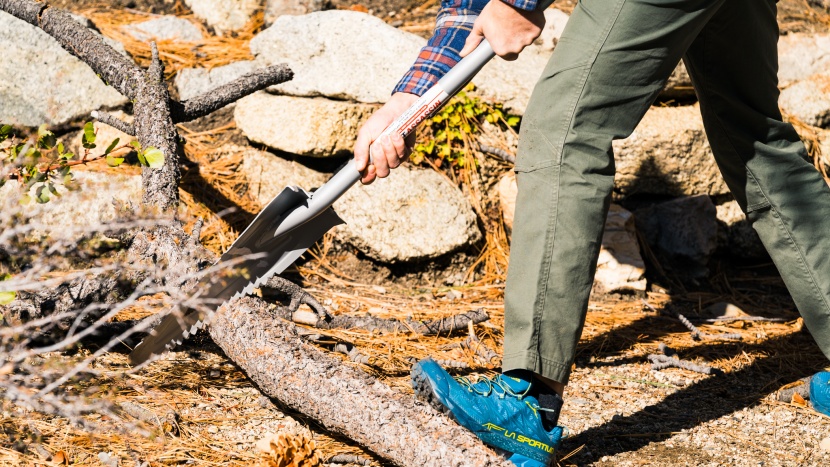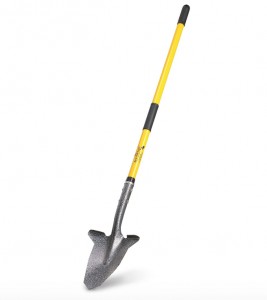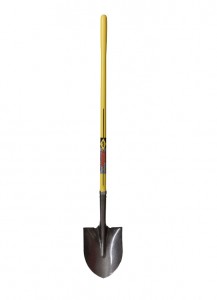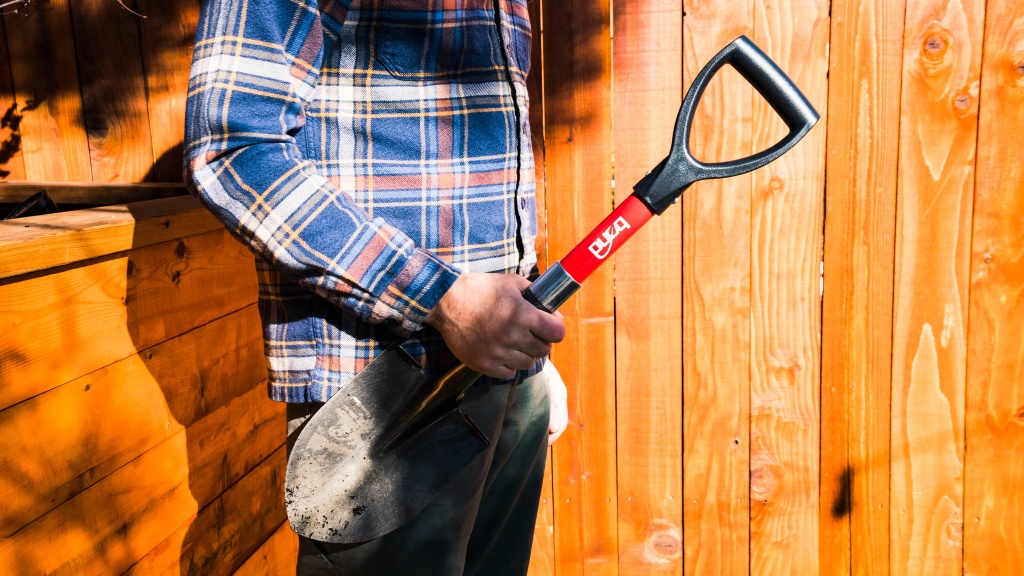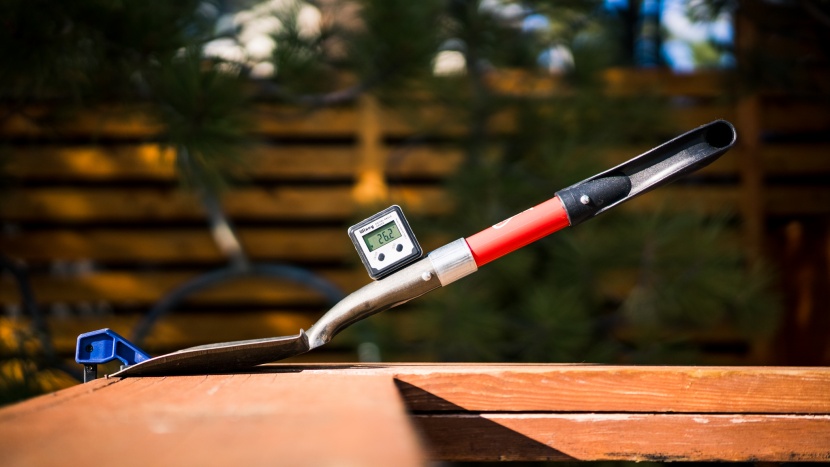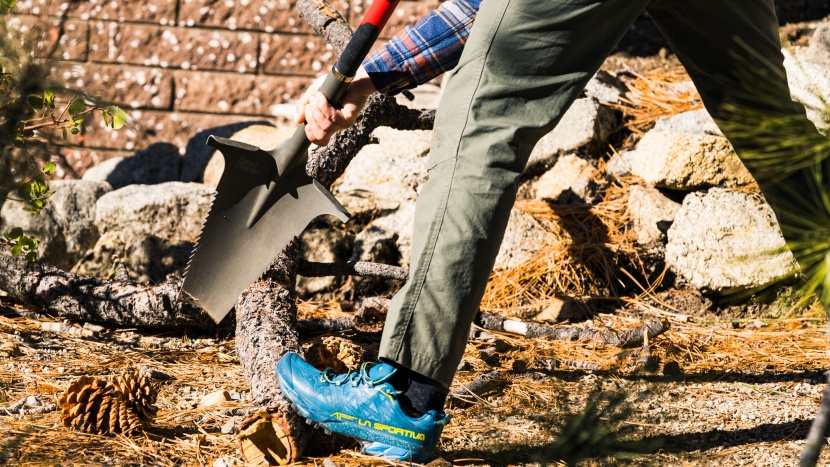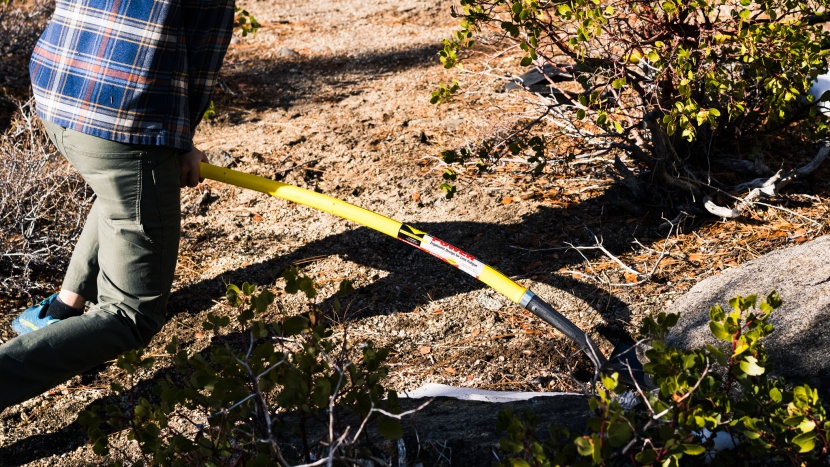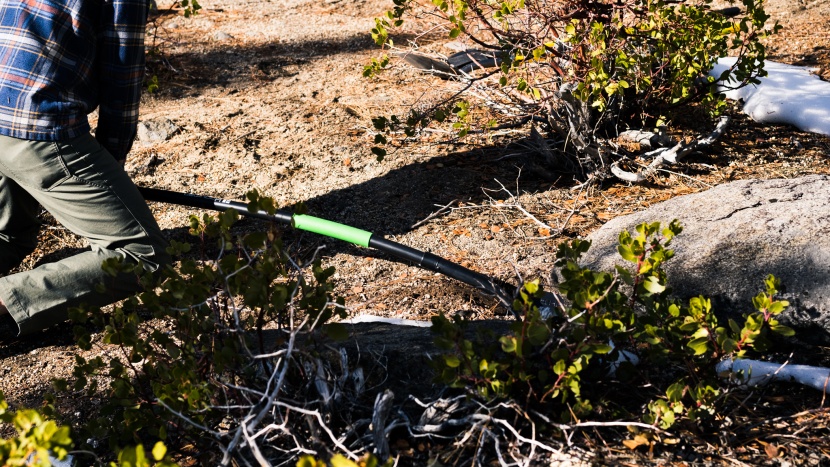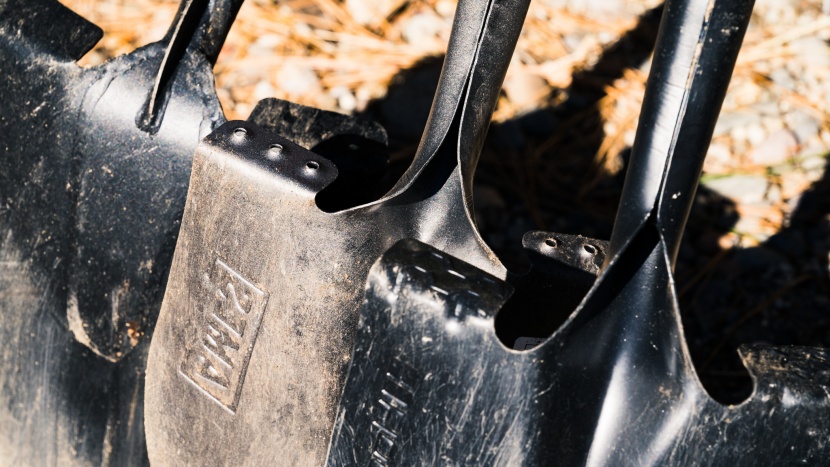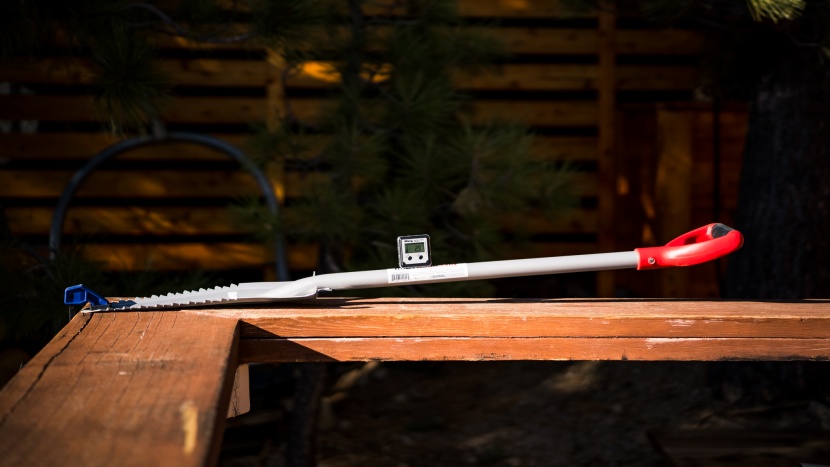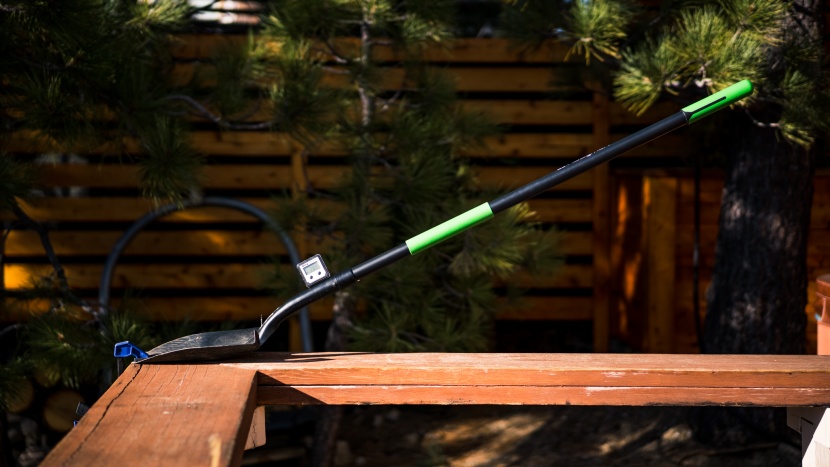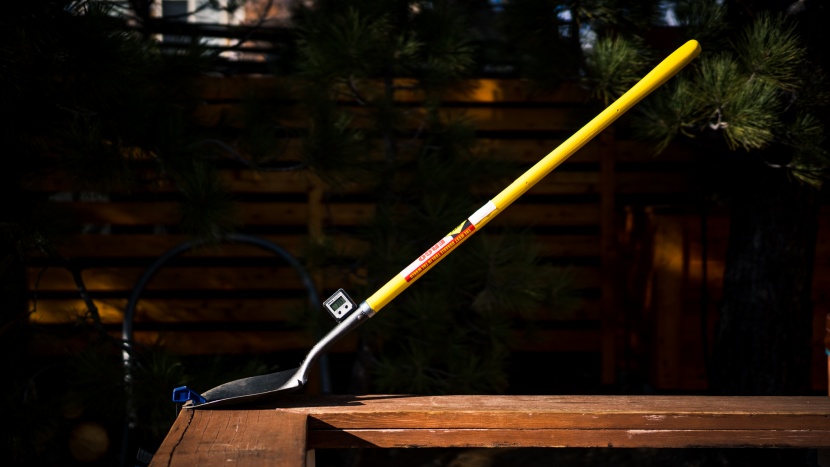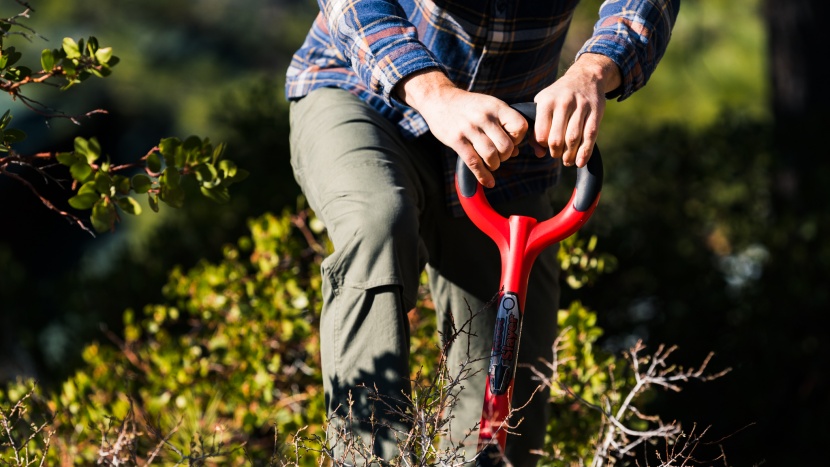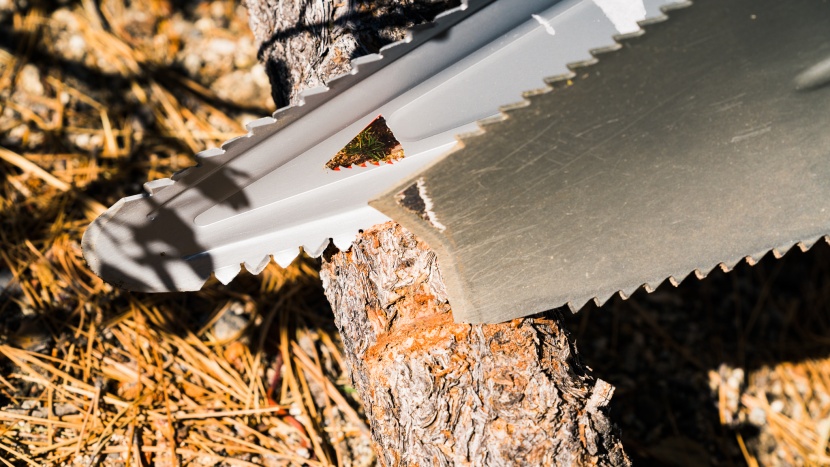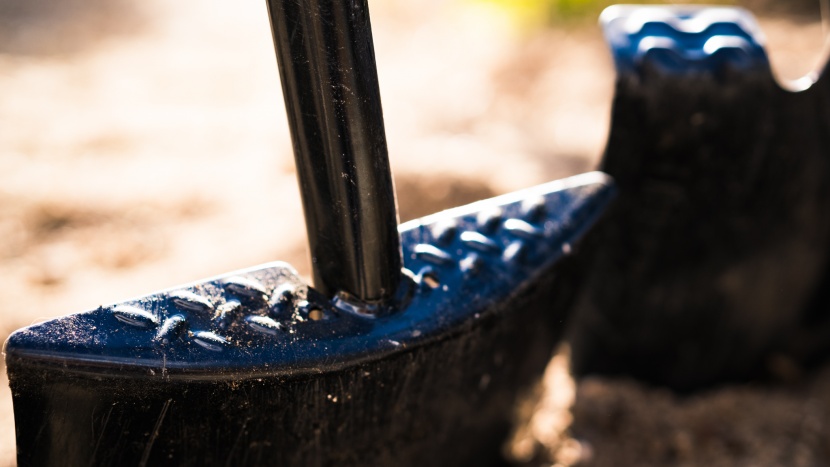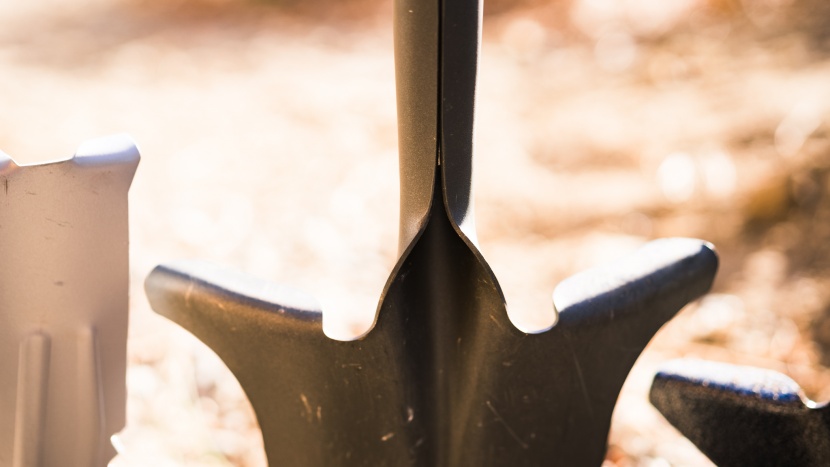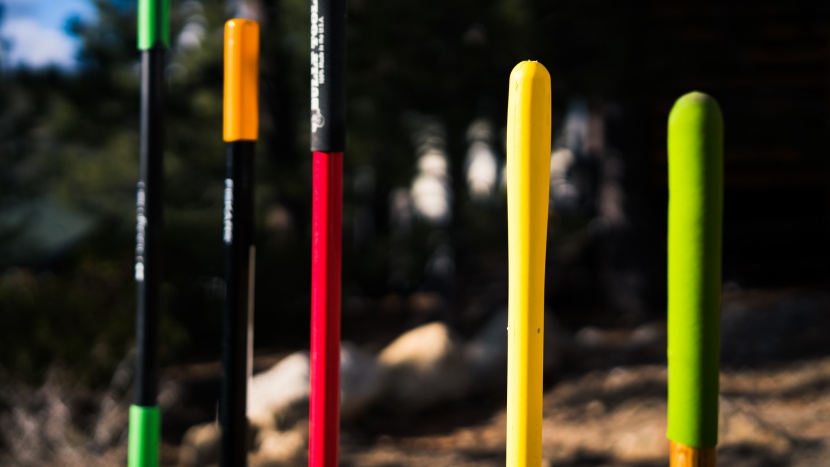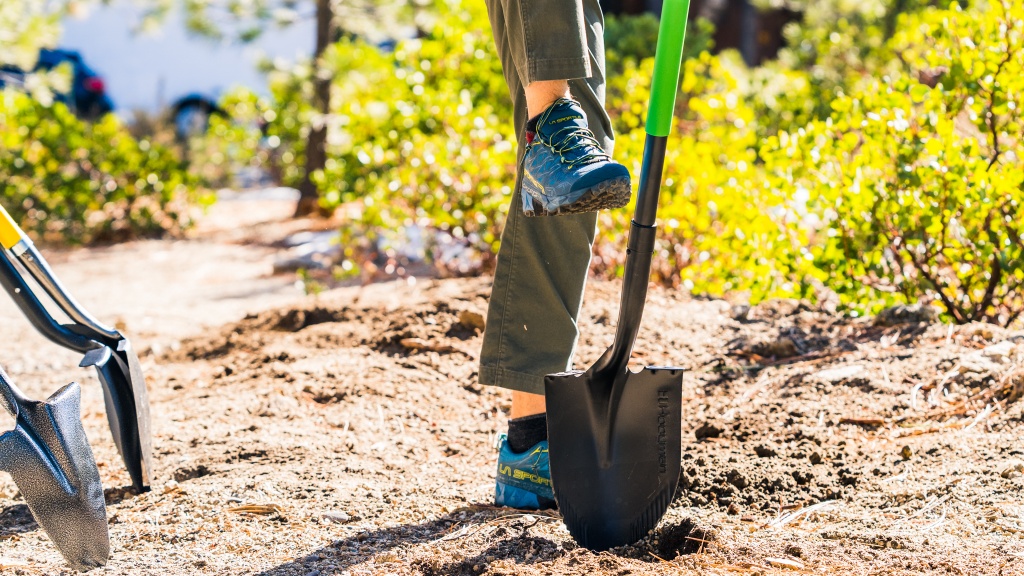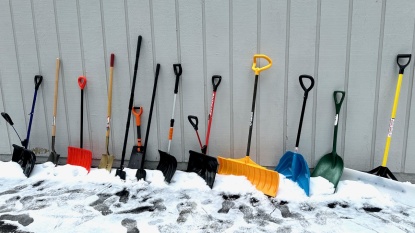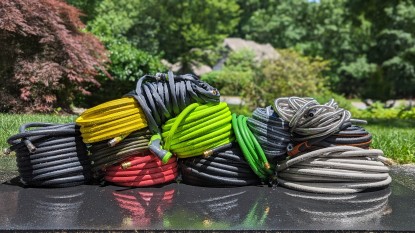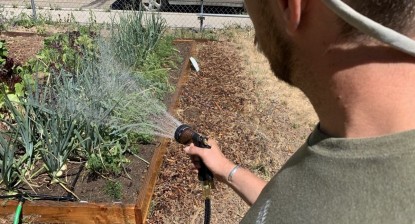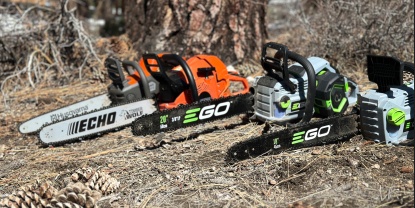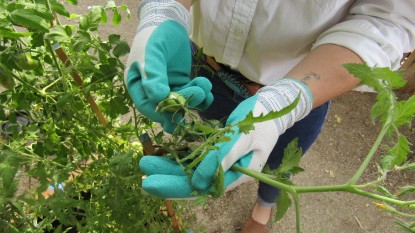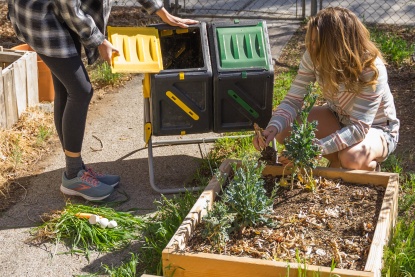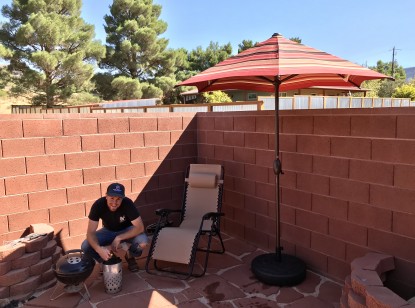We did some serious digging to find the best gardening shovels available today. We purchased the top 9 shovels available to test side-by-side after weeding through shovel-fulls of information from home and garden sites and scientific reports on earth displacement ergonomics. Using a framework of four performance metrics, we executed several standard garden tasks while considering the durability, ergonomics, features, and versatility. We dug, shoveled, pried up boulders, and hacked through roots to discover the toughest of the bunch, the best for demolishing roots, and the most versatile all-around shovel available to recommend to you.
Once you break ground, our home & garden experts are here to help you find the best products to fulfill your growing aspirations. We've tested some of the best gardening gear to see you through the whole cycle, from starting seeds to making your own nutrient-rich soil in a top-rated compost bin. If your projects are going to require a bit more heavy lifting, we have you covered with comprehensive reviews of some of the best outdoor tools on the market, ranging from chainsaws for clearing land, to top-rated drills for building planter boxes, to expandable hose for watering your garden.The Best Gardening Shovel

Our Top Picks
9 Best Gardening Shovels
Of the full-sized shovels in our tests, the Hooyman Heavy Duty hits the sweet spot between weight and durability while providing just enough ergonomic extras to earn its place as our testers' favorite. With a measured rise angle of 28.8°, prying up clay-heavy soils is no big deal, and the large, textured step is helpful when plunging. Our boots never slipped while testing this model, even when the going got muddy. With two generously sized tacky grip zones on the mid-shaft and handle, shoveling tasks are made easier, especially from awkward positions, such as shoveling from a wheelbarrow or a truck bed when you're still standing on the ground. The blade has small serrations that help bust up roots and sticks under an inch in diameter. While it doesn't handle roots as well as the more specialized shovels, the serrations come in handy, so you won't need to switch tools as often.
When we turned a critical eye to the Hooyman, we didn't find much to dislike about this shovel. A lighter shovel would be better for general shoveling (moving material from point A to point B), but it wouldn't be as durable for prying up rocks and the general abuse shovels endure. There is a small pocket on the back of the blade where the blade connects to the shaft. We experienced some dirt build-up here when working with mud, but this didn't affect our digging and hosed off easily when we were finished for the day. Overall, if you're looking for the most versatile all-purpose shovel, the Hooyman is your best tool.
The best bargain shovel of all we tested is the AMES Long Wood Handle Round Point Shovel. It performs well enough for most digging yardwork you may take on with a shovel, but the initial cost is lower than most. It is the only shovel in our selection with a wooden handle. Fiberglass and steel handles have greater longevity than hardwood, but plenty of folks prefer the wooden aesthetic for appearance and more practical reasons. Wooden handles are easier to replace and can even be repaired with wood glue if the handle is minimally damaged. AMES caps their handle off with an extra grippy casing at the hilt. The step on this classic shovel is anything but traditional, and at an inch wide, it's great for stomping or even jumping on as you dig deep.
Depending on your preferences, the wooden handle is a make-or-break feature. During our pry test, we could bounce on the handle of the all-steel shovels without worrying about them breaking. The wooden handle of this gardening shovel flexed quite a bit, and we hesitated to put the full weight of a middle-aged male human on the handle end with the blade wedged under several hundred pounds of a boulder. If you're not one to properly take care of your tools, this shovel will not hold up to days left out in the sun and rain like a fiberglass handle can. If you can store this shovel properly, the AMES is a fine choice for most shoveling and digging tasks around the yard.
Ready for the long haul, the Fiskars Long Handle garden shovel is the burliest shovel we tested. In our pry tests, our 150 lb tester could not detect any flex in this shovel's handle. It's the only No. 2-style digging shovel in our review with a handle welded directly to the blade, and it has a huge step with great traction for plunging into dense sediment. On top of its solid construction, the Fiskars shovel has an angled handle that makes shoveling from waist height easier and gives it a greater rise angle while allowing the shovel handle to be closer to your body when the blade is perpendicular to the ground.
Weighing in at 6 pounds, Fiskars Long Handle is heavier than many other contenders — almost twice as heavy as some. While this doesn't hinder digging ability, for shoveling, the extra weight adds up quickly as you move the weight of the shovel in addition to the dirt or gravel you're transporting throughout the day. The disadvantage to the blade and handle being welded together is that if the handle does break, you'll need to send it back to Fiskars for replacement instead of replacing it in the field. If your tasks or techniques typically involve lots of plunging, jumping, hacking, smashing, and general aggression toward the ground, this is the shovel we'd recommend.
The Radius Garden Root Slayer is an awesome tool for landscapers and gardeners whose main tasks are planting and repotting. However, it's still heavy-duty enough for more aggressive digging and root cutting (AKA slaying). Its round, ergonomic handle and 45" shaft make it perfect for those crouching or working on their knees, while its large steps give you more power and leverage than the typical short, lightweight garden trowel. The blade is serrated on either side. While we eventually managed to saw through a 4" diameter branch, our testers found it very useful to make small cuts through roots and thinner branches without needing to switch tools.
The Root Slayer falls into some of the traps of other specialized shovel tools. While its blade is wider and more suited to earth-moving than the narrow-bladed Root Assassin, it still can't hold a candle to a standard, longer-handled shovel, which we believe is mandatory for all-day digging work. However, if your main demands of a shovel are breaking up rooty soil and digging smaller, precise holes for your plants, the Root Slayer has you covered.
During shovel testing, we discovered that not all fiberglass handles are created equal. While some flexed almost to the breaking point, the handle of the Bully Tools 14-Gauge Round Point shovel held strong while we pried and levered rocks and roots from the earth. The blade has one of the few closed backs in our test, which is excellent for muddy jobs since it won't get clogged and heavy with dirt. The blade's overall construction is super impressive, down to the welded I-beam construction and huge 1.5" steps.
This is a shovel of the highest quality. It narrowly misses the mark as our favorite because of its weight. Compared to the competition, it's too heavy for an all-around gardening shovel, though it's well suited for heavier digging jobs. This shovel is advertised as having no seam on the ferrule, but the model we tested has one such seam, though it showed no signs of separating or bending under stress.
The Acme Tools Root Assassin is a specialized tool for sawing through thick roots that stand in the way of your next trench or post hole. Its narrow blade makes it much easier to maneuver and saw in small spaces and holes. The blade itself has offset, alternating teeth that make back-and-forth sawing action more efficient than models with teeth that all face the same direction. Finally, its full carbon steel construction and welded blade are ready to stand up to hundreds of jobs in our assessment, as long as it's not used for prying.
Due to its specialized features, the Root Assassin is by no means “one shovel to rule them all.” It has an exceptionally narrow blade that's not suited to moving a lot of earth in a short amount of time. The handle on the model we tested is 32", so it's hard on your back unless you're working close to the ground. Plus, a shorter handle means less leverage. The Root Assassin can't compete with or replace a traditional wide-bladed shovel, but it's a great tool to have on standby on a digging job, and it's super handy for replanting small shrubs in your yard.
Imagine the precision of a garden trowel combined with the leveraging power of the shovel, and you've got the Spear Head Spade. Our skeptical testers were pleasantly surprised when they used this spartan yet effective tool. This model lets you do tasks you normally use a trowel for while standing up. Its narrow, pointy shape is perfect for breaking up dense root systems and moving perennials without destroying them. Don't let the word “trowel” give you the wrong idea; you can get aggressive with this shovel if needed. Its large step platform lets you throw your full weight at the rocky, rooty ground, making it well-equipped to tackle post holes and narrow trenches.
The Spear Head Spade won't move dirt and gravel as efficiently as a traditional shovel due to the narrow blade. A disadvantage to the wide steps is that you can't get in tight spaces as easily as you can with the Acme Tools Root Assassin. Most likely, folks will use this gardening shovel in conjunction with a traditional shovel. When a blunted standard shovel blade won't do, it's good to have the Spear Head Spade close at hand.
For folks that need one tool for shoveling and light-duty digging around the yard, the Nupla Round Point shovel gets the job down. Aside from the fiberglass handle, this shovel is the classic, No. 2 open-backed shovel your dad probably used. It has a small step and a 48" handle, with a huge 39° rise angle, the most dramatic angle in our test. Over time, this can save you some work on longer digging projects. The Nupla is one of the lighter shovels in our review, and the weight savings add up when moving hundreds of square feet of dirt. Its shorter length and lower weight might appeal to individuals with a shorter stature.
During our pry test, the fiberglass handle of the Nupla flexed more than any other model, and our testers hesitated to put their entire weight on the shovel in fear it would snap. Though we recommend using gloves for everything but the smallest shoveling jobs, this model does not offer any extra grip points, and there is a sharp ridge on the handle. The step does not have tread and is small compared to the competition. If you're shopping for a shovel for basic chores like turning compost, digging out garden beds, or removing small bushes, Nupla will do the trick, and you don't need to spend much money, either.
The Bond LH015 Mini D Handle Shovel is ready to tackle light-duty planting jobs in soft or previously turned soils. Due to its short handle, it's best to work while kneeling in the garden bed with a flat of annuals by your side. However, should you encounter an odd rock or thin root, you can stand up and go at it, thanks to the small steps included on this shovel. This shovel's D-shaped handle helps alleviate its lack of leverage (somewhat) and allows you to hang it for storage.
While the Mini D is more suitable for digging than a narrow handheld trowel, it simply can't compete with its bigger cousins. The specialized root-busting shovels we reviewed are slightly larger than this one, but they're much better at digging through compact, rooty soils. The product description for this shovel advertises a metal handle, which is obviously incorrect in the model we purchased. We like that the shaft is lighter weight fiberglass, but we're not happy with the plastic D-handle we expected to be made from a stronger metal.
Why Trust GearLab
To bring you a comprehensive review of shovels, we dug into the world of ergonomics and physics and our backyards' rocky, rooty soils. We put together a four-metric evaluation plan to unearth which shovel is the best for digging, shoveling, busting through roots, and removing shrubs. We compared rise angles, grip handle placements, blade shapes and sharpness, weights, and special features. The bulk of the testing involved digging a 4' x 6' hole about 1.5' deep and filling it back in using each round point shovel. We also performed digging tasks with the specialized root-busting shovels, but our main focus for those models was how they cut roots with their pointed ends and serrated sides. For these models, we tested their blades on downed branches in our yard.
For this review, we charge Matt Bento with digging up all the pertinent info on shovels to get down to the root of what makes a great shoveling tool. Matt's no stranger to the mighty shovel. As a trail worker in Baxter Park, ME, he lugged shovels, chainsaws, pulaskis, and rock bars far into the backcountry, where he dug post holes, shoveled gravel, and pried up boulders to build trails, causeways, and log bridges in Maine's iconic wilderness. Today Matt's shovel work is more recreational and domestic without the ever-present menace of the bull moose during rut season. He uses shovels in his own garden, moving mulch, potting plants, and turning compost. He'd like to remind you to always call 811 before you dig to have your utility lines marked.
Analysis and Test Results
We compared these shovels using four metrics; Construction and Durability, Ergonomics, Features, and Versatility. Using these metrics, we highlight which models are best for different applications and determine which shovel is the most versatile gardening tool.
Construction & Durability
Shovels take a severe beating in most households and backyards, so they need to be able to handle some serious abuse. How the blade is constructed and attached to the handle and what materials the handle is made from are important factors that affect a shovel's durability. The reigning beefcake in our shovel toughness testing is the Fiskars Long Handle It features a 14-gauge steel blade welded to a 16-gauge steel shaft. We performed a flex test by wedging each shovel under an unmeasurably large boulder while a 150-lb tester leaned his full weight on the handle. The Fiskars shovel didn't flex at all, while the fiberglass handled Nupla Round Point flexed so much that we backed for fear it would snap. Not all fiberglass is the same, and the Hooyman Heavy Duty and Bully Tools 14-gauge Round Point shovels both showed minimal flexing. The AMES digging shovel flexed more than the Hooyman and the Bully tools, but not so much that we were worried about snapping the handle like the Nupla.
For blade construction, we looked at welds and reinforcement points and how the blade was attached to the shovel. The Fiskars Long Handle again takes the cake, as the blade is welded directly to the handle, while the Hooyman comes in as a close second with its reinforced welded I-beam construction on the blade. The Bully Tools has a long ferrule (the section that connects the blade to the handle), giving it a nice advantage in the prying game. Both the AMES and the Nupla blades are fairly basic, but it would still take some serious prying to break them.
For the specialized shovels, the Spear Head Spade has a long and durable fiberglass handle that's suited for prying at roots, while the Root Slayer and Root Assassin have shorter handles that flex less. They both have plastic on the end of their handles, but it is a high-quality plastic that feels more durable than the plastic hand on the Bond Mini D. Still, we don't recommend the root-busting models for anything more than light prying.
Ergonomics
Shoveling and digging require repetitive motion. Therefore, ergonomics is crucial to make your work more efficient while preserving your muscles and joints. First, we looked at the all-important rise angle of each shovel. Studies have shown that a rise angle of 32° is recommended for digging shovels. The rise angle dictates how high the shovel handle is when the blade is flat on the ground and how far you'll need to bend over when shoveling. When digging, a greater rise angle gives the digger more leverage when the blade is plunged into the dirt perpendicular to the ground. We measured and compared the rise angles of each shovel.
The Nupla Round Point has the greatest rise angle, measuring a dramatic 39°. This is great for shoveling dirt and gravel at ground level but is so steep that shoveling from waist height — as you might from a truck bed or wheelbarrow — is more difficult. The Fiskars Long Handle brings some nice ergonomic design to the game by having a double angled handle, initially 33°, then easing off to 25°. The Hooyman and the Bully Tools have a rise angle close to the ergonomic recommendations with 28.8° and 31°, respectively. The Root Assassin and Root Slayer have the smallest rise angles, but these tools are designed to cut roots and break up rocky soils, not transport material.
The shovel's handle design also gets some scrutiny in our ergonomics metric. The majority of shovel handles over the ages have been round hardwood shafts. Though today's top models aren't radically different, modern tool makers have added a few tweaks that make using a shovel a little easier.
The Hooyman and the Spear Head Spade feature tacky handle coatings at the hilt and midpoint of the shovel handle. This is enormously helpful when you need to choke up on the shovel handle when you have a gallon of dirt on the shovel blade. This may not feel like a huge advantage initially, but it makes a big difference over time after loads of dirt.
Among the root-busting shovels, we favored the circular handle of the Radius Garden Root Slayer. It allows for many different grip options as you pull and push it from many different angles to saw through roots, while the Root Assassin's D-handle isn't as accommodating.
Features
We compared each shovel's main features, including blades, steps, and handles, to determine which ones work best for their prescribed task. While we didn't expect the standard round-point shovels to saw through roots like the shovels with serrated blades, we dug holes with all of the shovels to achieve as many “apples to apples” comparisons as possible.
Blades
The best blades for shoveling and digging are found on the Hooyman, Bully Tools, and Fiskars shovels. The Bully Tools and Fiskars shovels feature a closed back to avoid collecting mud, which can add more weight to an already arduous shoveling job. The Bond Mini has a much smaller blade and isn't suitable for digging anywhere but a flower bed.
The blades with serrated edges both function like saws. However, the Root Assassin performs better at sawing because its offset teeth allow for a better back and forth motion. It is also more narrow and easier to maneuver in tight spaces. While the wider-bladed Root Slayer takes a bit more time and effort to saw through a branch, it's also better suited for digging due to its wider blade.
Steps
Steps are important, allowing you to stomp or even jump on the top of your shovel blade to plunge your shovel into rocky, rooty earth. In our testing, we found that when it comes to steps, the larger ones win out. The Fiskars Long Handle shovel has the largest step. It's 1.5" wide and runs the entire length of the top of the blade. The Hooyman also has very wide steps that are textured to prevent slippage when the going gets wet or muddy, as do the AMES and Bully Tools blades. The Nupla shovel was the only one in our test with smaller half-inch steps.
The Radius Garden Root Slayer and the Spear Head spade provide ample steps that are wider than the Root Assassin"s small, narrow steps. The Bond Mini D has steps if you need extra power in a pinch, but the short handle and small blade make it the weakest digger in the pack.
Handles
Except for the basic Nupla Round Point, each of the standard round point shovels in our test included some kind of enhanced grip on the hilt, but not all are created equally. The AMES, Hooyman, and Bully Tools all feature an extra tacky coating on the hilt, and the Hooyman even has another tacky grip point on the mid-shaft. The Spear Head Spade also has a similar dual-grip design. The Fiskars Long Handle has a rubber casing on the hilt that's slightly more grippy than the metal shaft. The smaller specialized shovels all have a variation on the D handle, which allows for a wider variety of grip positions and the ability to hang them on a peg for storage.
Versatility
After digging, shoveling, prying, and root-slicing with each model, our testers believe that versatility is important in choosing a shovel. While it's expected that the more specialized shovels will need to be paired with a shovel more appropriate for digging, a standard round point shovel needs to be well-rounded, striking a balance between weight and durability. We feel that the Hooyman Heavy Duty shovel is the most versatile shovel we have had the pleasure of trying. The Hooyman is 4.5 lbs, and while not the lightest, it's lighter than the all-steel Fiskars Long Handle. While the Hooyman employs a fiberglass handle that isn't as strong as steel, it's still one of the more durable models. The advantages of a lighter shovel become most apparent when moving 100s of square feet of dirt and gravel over time. The Bully Tools 14-Guage Round Point is also a well-balanced, versatile shovel, though it is a touch heavier than the Hooyman and lacks a grip point at the midshaft.
The more specialized shovels are inherently less versatile. However, the Radius Garden Root Slayer is more versatile than the Root Assassin and if you need one tool to bring for various quick jobs while you survey your menagerie, it could be the one. While it's not the best sawing tool, it saws thinner roots and branches just fine, its blade is wide enough to dig small holes with efficiency, and its wide steps will allow you to put some power into your plunges.
Conclusion
While the subtle differences between shovels may seem arbitrary, our testing says otherwise. Well-placed grips, enhanced steps, and subtle curves contribute to how the repetitive motions of shoveling and digging affect your body and ultimately make your job more efficient. We believe our detailed analysis of the standard shovel will help you pick out the best model for your yard or business, and our coverage of the specialized shovel tools might open your eyes to new solutions.
—Matt Bento


